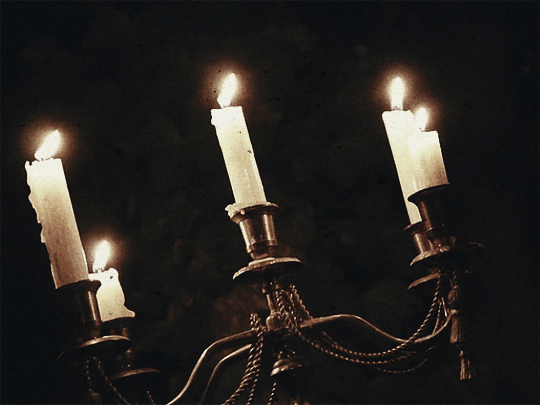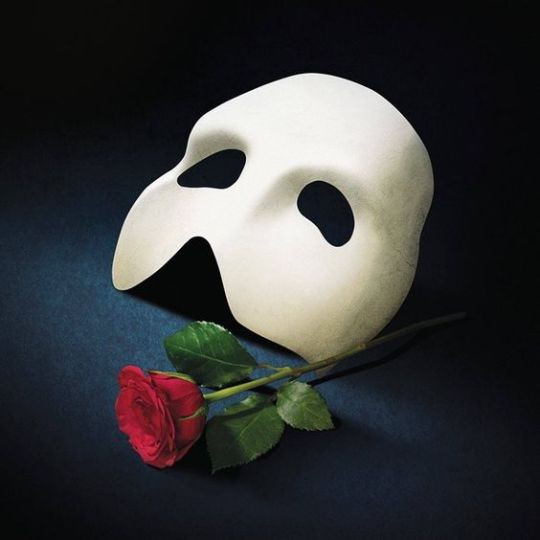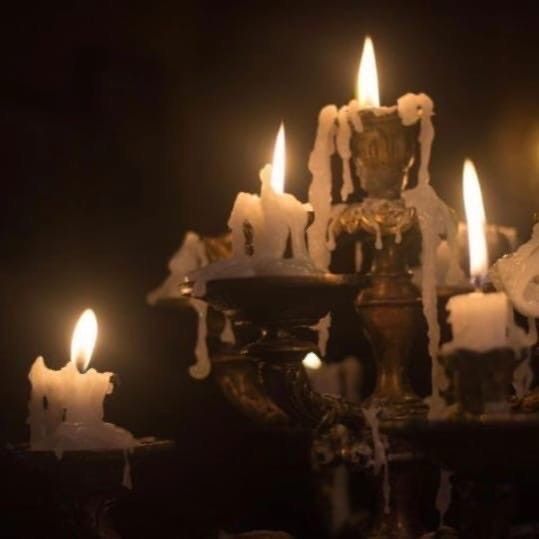Text
Look, I’m just some weird, curious girl that likes analyzing stuff.

Thank you, Attention Horror SW🖤 on YouTube.
Please, reblog for a wider range and less biased opinion.✨
2K notes
·
View notes
Text

.𖥔 ݁ ˖ִ ࣪⚝₊ ⊹˚.𖥔 ݁ ˖ִ ࣪⚝₊ ⊹˚.𖥔 ݁ ˖ִ ࣪⚝₊ ⊹˚.𖥔 ݁ ˖ִ ࣪⚝₊ ⊹˚.𖥔 ݁ ˖ִ ࣪⚝₊ ⊹˚.𖥔 ݁ ˖ִ ࣪⚝₊ ⊹˚.𖥔 ݁ ˖ִ ࣪⚝₊ ⊹˚.𖥔 ݁ ˖ִ ࣪⚝₊ ⊹˚.𖥔 ݁ ˖ִ ࣪⚝₊ ⊹˚
『K』『i』『n』『g』 『L』『e』『a』『r』
.𖥔 ݁ ˖ִ ࣪⚝₊ ⊹˚.𖥔 ݁ ˖ִ ࣪⚝₊ ⊹˚.𖥔 ݁ ˖ִ ࣪⚝₊ ⊹˚.𖥔 ݁ ˖ִ ࣪⚝₊ ⊹˚.𖥔 ݁ ˖ִ ࣪⚝₊ ⊹˚.𖥔 ݁ ˖ִ ࣪⚝₊ ⊹˚.𖥔 ݁ ˖ִ ࣪⚝₊ ⊹˚.𖥔 ݁ ˖ִ ࣪⚝₊ ⊹˚.𖥔 ݁ ˖ִ ࣪⚝₊ ⊹˚
𝓟𝓵𝓸𝓽 𝓸𝓾𝓽𝓵𝓲𝓷𝓮
Act 1
The first act opens with King Lear announcing his intention to divide his kingdom among his three daughters, Goneril, Regan, and Cordelia, based on their professions of love for him. Goneril and Regan, eager to gain a larger portion of the kingdom, flatter their father with exaggerated declarations of love. Cordelia, the youngest and most beloved daughter, refuses to engage in such flattery, stating that she loves him as a daughter should in accordance with her duty. Angered by her honesty, Lear disowns Cordelia and divides her share of the kingdom between Goneril and Regan. The Earl of Kent, a loyal nobleman, tries to persuade Lear to reconsider his decision, but Lear banishes him from the kingdom for his insolence. Meanwhile, the Earl of Gloucester introduces his sons, Edmund and Edgar. Edmund schemes to discredit Edgar and gain his father's inheritance, setting in motion a subplot of deceit and betrayal.
Act 2
Goneril, now married to the Duke of Albany, complains to her husband about her father’s unruly behaviour and demands that he reduce his retinue of knights. The king, angered by Goneril's disrespect, decides to stay with Regan instead and sends Kent to deliver letters to her, informing her of his arrival. Edmund forges a letter from Edgar, framing him for plotting against their father's life. Edgar flees, knowing that his life is in danger. Lear arrives at Regan's castle, where he is met with the same inhospitable treatment as at Goneril's. Regan, influenced by Goneril's complaints, refuses to accommodate Lear's entire retinue, prompting Lear to storm out into a raging storm. Gloucester, loyal to Lear, decides to help him despite the risks and sends a servant to guide Lear to a safe haven. The storm symbolises Lear's inner turmoil and descent into madness as he confronts the harsh realities of his own folly and betrayal.
🃜🃚🃖🃁🂭🂺🃜🃚🃖🃁🂭🂺🃜🃚🃖🃁🂭🂺🃜🃚🃖🃁🂭🂺🃜🃚🃖🃁🂭🂺
Introduction to the characters and commentary
The play, as many others made by Shakespeare, likes to play around with familiar dynamics of noble families, while also critiquing with dramatic irony the flaws of the characters themselves. “King Lear” is perhaps one the biggest examples of this, offering the story of a family which is doomed to tragedy due to the flaws of all the members of the family members, feelings of jealousy and greed erode the relationships of both of the noble families represented within the story, depicting a tragic ending for all involved.
One of the most interesting characters is of course the one of the king, he is depicted as arrogant, living in his own image, lavishing in the attentions of his daughters, particularly of his two eldest, who offer him compliments and gratitudes in hopes of winning favours. The character of Lear is the one that portrays a tragic descent caused only by his own doing, his arrogance and extravagance is his achilles heel and undoing. Through his desire for praise he loses the only member of his family who truly loved him as a father, Cordelia, as well as his most loyal servant Kent. The character of Lear starts off as a man full of pride, ending up a disgraced blind madman, who dies out of misery after learning of Cordelia’s death. It is interesting how the character arc of the king is reflected through the events of the story, as the inner turmoil of Lear enlarges as a storm becomes more and more near, until Lear himself is caught in it with only a few boxes/hut (depending on the production) to protect himself, reflecting the way in which the king is caught up with his own self which is will be his destruction, literally and figuratively.
The character of the King’s beloved daughter Cordelia is one that is relatively simple, she seeks to speak the truth especially to her father whom she loves despite his flaws. The character of Cordelia is one that is beautiful in her own simplicity, she reflects the classic idea of the “Angel women” much like Dante’s Beatrice, a perhaps static character that has the purpose of showing the flaws of other characters while also showing a forgiving and human perspective. Although Cordelia plays a central role in directing the narrative of the story by influencing the decisions of others, her actions are rather passive, suffering through the actions of others ultimately ending in her death.
The sub-plot that is developed together with the main story line has the same themes of filial duties, as it shows the relationship between a father, the earl of Gloucester, and his two sons Edgar and Edmund. The key aspect of the dynamics between the three characters is the fact that Edmund is the Earl’s illegitimate son, as such he yearns for his brother’s inheritance which he does not have a right to. The significance of the subplot of King Lear has the purpose of supporting and highlighting the characters of the main plot, acting as another element of tragedy and increasing tensions throughout the play.
🃜🃚🃖🃁🂭🂺🃜🃚🃖🃁🂭🂺🃜🃚🃖🃁🂭🂺🃜🃚🃖🃁🂭🂺🃜🃚🃖🃁🂭🂺
As such the main themes of the play revolve around families, and especially filial duty and filial responsibility. It reflects on the concept of honesty, and what comes out of it. The play ultimately does not pose a happy ending or sad ending, but rather a bittersweet ending. Cordelia, perhaps the most noble person, dies at the end proving that just because someone is honest does not mean that they will be rewarded. At the same time the king, the one that caused Cordelia’s misery in the first place by disowning her, dies as well after undergoing a deep change of character that made him realise that Cordelia’s love was the purest of all and should have been rewarded as such.
0 notes
Text
𝕋𝕙𝕖 𝕄𝕚𝕤𝕒𝕟𝕥𝕙𝕣𝕠𝕡𝕖

⋆。°✩ ⋆⁺。˚⋆˙‧₊✩₊‧˙⋆˚。⁺⋆ ✩°。⋆
.・゜゜・ ・゜゜・.
。・゚゚・ ・゚゚・。
𝓟𝓵𝓸𝓽 𝓸𝓾𝓽𝓵𝓲𝓷𝓮
Act 1:
The play opens with Alceste, the misanthrope, expressing his disdain for the hypocrisy and insincerity of society. He is in love with Célimène, a coquettish young woman known for her beauty and charm. Alceste's friend Philinte attempts to counsel him on being more adaptable to social niceties, but Alceste remains steadfast in his honesty. Meanwhile, Célimène engages in witty banter and flirtations with multiple suitors, including Oronte and Acaste. The act sets the stage for the central conflict between Alceste's principled honesty and the superficiality of courtly society.
Act 2:
As the romantic and social intrigues continue, Alceste remains critical of societal norms. Célimène's salon becomes a hub of gossip and flirtation, with various characters vying for her attention. Arsinoé, a jealous rival of Célimène, attempts to undermine her reputation. Alceste, despite his aversion to social conventions, finds himself drawn to Célimène but struggles with the contradictions between his principles and his feelings. The act builds tension as Alceste faces the complexities of love and social conformity, foreshadowing his turning point and confrontation with Oronte which will lead to his fate
✮ ───── ✮ ───── ✮ ───── ✮ ───── ✮
Introduction to the characters and commentary
“The Misanthrope” is a story that focuses on the characters of alceste, who as the title suggests is a misanthrope. Alceste fights against the dishonesty and fakeness inside French society, he rejects anything that is not the “truth” as well as anything that is done in order to keep an image for the public, he repudiates social niceties and people who talk and gossip behind people’s backs, In a way it could be said that he rejects all that is part of the french high society in the 17th century, which is often seen as a pinnacle of decadence. However the mind and heart of Alceste lives in constant hypocrisy as the young woman who has stolen his heart is none other than a satire representation of this society that he despises, Célimène is a woman that thrives in social contexts often accepting flirtatiousness from other men. She enjoys the gossip and is often one to propagate it in the courts of high society, she lives by her social appearance. The other character that pulls at Alceste’s hypocrisy is Philinte, a man that although recognises the flaws of their society also understands the importance of having a social norm and adhering to it. Despite often disagreeing with Alceste he is shown as caring and defensive towards him, Despairing when Alceste’s choices lead him astray and wishing the best for him. Philinte is often considered to be Alceste’s foil throughout the play as he reflects the extremeness of Alceste’s views on humanity.
Alceste attraction to Célimène is almost inexpiable, it is not as if he lacks choice in women as two other suitors, Arsinoé and Eliante, both of which preserve those values that Alceste finds noble such as prudishness and honesty, but he still finds himself orbitating towards Célimène. Even Alceste finds it impossible to be in love with such a woman, as such he often asks her to change for him, or at least to put him above all other suitors, and although she rejects the idea of change she promises to put him above everyone else. Followed by Alceste, Célimène has three other suitors that try to win her heart throughout the play. A marquis called Acaste, a noble called Oronte and another marquis called Clitandre. Célimène strings along all of her suitors, giving them attentions and affections, however this game dooms her to her fate as Alceste finds out that the romantic letter that Célimène sent to him was not alone, but instead she had sent the same letter to other suitors, This greatly heightens the tensions between the two as Alceste is deeply hurt by this action.
However, the turning point of the play follows soon after. Alceste at the start of the play confronts Oronte who asks for an opinion on his poem, which Alceste finds repulsive, and not finding the usefulness in lying and praising his work decides to tell Oronte what he really thinks of his work, thus gravely insulting it. This however snaps back at him as later on in the play he gets called to trial for the humiliation he gave to the noble Oronte. Upon this trial Alceste is humiliated thus exiling himself. Before doing so Alceste asks Célimène to come with him, to leave behind her frivolous ways and be faithful to him, as nobody else would grace her after her plot was discovered. Yet she denies him, leaving him alone to his fate.
✮ ───── ✮ ───── ✮ ───── ✮ ───── ✮
Molier makes great use of satirical devices and characters throughout the play, making somewhat fun of both those that are too-self absorbed as well as those who through cynicism and reject the status quo. The play revolves around two distant extremes, Célimène and Alceste, that revolve around each other maintaining an insurmountable distance dictated by their own values, both of which are too convinced to let go of.
At the end of the day Alceste and Célimène are the only two people that suffer due to their own vices, Philinte and Eliante end up both finding love in each other, and the marquis and nobles will soon move on from Célimène and her affections. What this might be is a subtle commentary from Molier on excesses, everything is good from cynicism to self-absorption as long as we don’t get lost inside it.
One of the other vices which takes on a major importance is the one of jealousy, which becomes a driving force for Arsinoé in ruining Célimène réputation, is becomes part of Alceste’s character as he finds himself jealous towards Célimène because of all the attentions she gives and receives.
0 notes
Text
the plot of hannibal in a nutshell:
season one: hannibal baby traps will with a teenager
season two: will decides the best way to catch a serial killer is by honey trapping him
season three: will and bedelia fight like feral cats over the worst man you’ll ever meet (will wins)
3K notes
·
View notes
Text
𝕀𝕟𝕥𝕣𝕠𝕕𝕦𝕔𝕥𝕚𝕠𝕟
:・゚✧:・.☽˚。・゚✧:・.::・゚✧:・.☽˚。・゚✧:・.::・゚✧:・.☽˚。・゚✧:・.::・゚✧:・.☽˚。・゚✧:・.::・゚
I don't know who will be reading this (hope no one) but welcome to this blog! as I have stated in the caption this blog was born out of a little school project in which I simply post commentaries and stuff like that on different theatrical shows which I have watched live.
Honestly I'll probably post every 1-2 weeks if not once a month, and this account will probably be either forgotten about in either a year or maybe I'll delete it once the project is done or something idk.
:・゚✧:・.☽˚。・゚✧:・.::・゚✧:・.☽˚。・゚✧:・.::・゚✧:・.☽˚。・゚✧:・.::・゚✧:・.☽˚。・゚✧:・.::・゚
0 notes
Text
𝕿𝖍𝖊 𝕻𝖍𝖆𝖓𝖙𝖔𝖒 𝖔𝖋 𝖙𝖍𝖊 𝕺𝖕𝖊𝖗𝖆
┊ ┊ ┊ ┊ ┊ ┊
┊ ┊ ┊ ┊ ˚★⋆。˚ ⋆
┊ ┊ ┊ ⋆
┊ ┊ ★⋆
┊ ◦
★⋆ ┊ . ˚
˚★


𝓟𝓵𝓸𝓽 𝓸𝓾𝓽𝓵𝓲𝓷𝓮
Act 1
The Phantom, a mystery man in a mask, haunts the Paris Opera House, the setting for the story. The Phantom becomes fixated on Christine Daaé, a gifted and attractive young vocalist, whom we meet in the first act. Christine receives guidance from the Phantom, who teaches her how to sing and insists that she be given the lead role in the opera. As romantic tensions forms between Christine, the Phantom, and the attractive young aristocrat Raoul as the narrative progresses. The Phantom controls the actions of those taking place in the opera house in the first act, using his power to make sure Christine succeeds on stage. wearing a mask to hide his deformed face. As the characters' fates get closer and closer together, the suspense rises.
Act 2
The Phantom's fixation with Christine grows more intense in the second act, setting off a sequence of dramatic occurrences. In the story, the dark and sad backstory of the enigmatic antagonist is explored as Raoul tries to free Christine from the Phantom's grasp. The magnificent Paris Opera House serves as the setting for the pivotal meeting between Christine, Raoul, and the Phantom. The drama that is playing out revolves around the themes of love, tragedy, and the fallout from obsession. The human side of the Phantom is exposed in the second act, which also tackles the inner struggle of the character and the intricacies of the connections between them. In the end, "The Phantom of the Opera" is an enthralling story set in the opulent and enigmatic Paris Opera House, about love, passion, and the frightening results of unbridled desire.
─── ⋆⋅☆⋅⋆ ───── ⋆⋅☆⋅⋆ ───── ⋆⋅☆⋅⋆ ───── ⋆⋅☆⋅⋆
General thoughts
Even before seeing the show live I was obsessed with the music, especially the soundtrack of the "Phantom of the Opera" movie starring Emmy Rossum, Although it might not be everyones cup of tea I always thought her singing voice was lovely, so delicate when it needs to be but at the same time strong and potent (obviously there is a difference in singing live and in studio, so not to compare a recording with a live performance of other actresses). However it was especially exciting to see the show live since Ramin Karimloo was wearing the role of the phantom once again, as this is one of his most praised roles, I was not left unimpressed, on stage he gives the impression of a commanding aura, always drawing the viewers attention.
I had the fortune of viewing a show with a live orchestra (which is not always granted) which was just amazing, I don't think that there are any words that can actually describe Lloyd Webber's musicality. As I said before I am a big fan of the music in itself of this show, from the starting riff of the organ that shakes the entire theatre to the more delicate of melodies the music is a treat to the ears.
If I had to choose a favourite scene I would be divided between the starting sequence, with the rotating scenography, it was honestly simply mesmerising to watch. But I also harbour great love for the masquerade scene, seeing all the different ball gowns and curated costumes as golden confetti soar inside the theatre is an amazing imagery.
─── ⋆⋅☆⋅⋆ ───── ⋆⋅☆⋅⋆ ───── ⋆⋅☆⋅⋆ ───── ⋆⋅☆⋅⋆
Commentary and small analysis
As we all know one of the main themes of the show is 'Unrequited love', from the character of the phantom towards Christine. There is a major difference as to how the two characters view each other, The phantom sees Christine as his muse, his own to display, his own to control. These controlling tendencies emerge especially after the return of Raoul into Christine's life, although throughout the play between the Phantom and Christine there is never an element that explicitly state that their relationship is romantic, the Phantom perceives it as so, and as such demands a level of commitment from Christine similar to the one of a relationship between partners, leading him to believe that Christine betrayed him by choosing Raoul.
Christine instead views the Phantom as an 'angel', as a guiding figure perhaps. It is debatable as to what Christine's feelings towards the Phantom were, some might say they were romantic, others might say platonic, another interpretation could be that Christine's feelings towards the Phantom were ones of attachment, a need of stability. I believe the way her character is interpreted deeply changes the message of the show, as it changes the different dynamics of the characters.
One of my favourite symbols inside the show is the phantoms mask. It is a way in which the Phantom is able to put a barrier between a world that fears and despises him and his biggest vulnerability. The mask acts as a way to keep composure, and as soon as Christine removes it he looses it. This act of anger shows desperation perhaps, desperation to be able to blend in, wanting to hide his differences and put on a "mask" of normality. Another detail that I live is the colour in itself, a candid white that tries to be as invisible as possible against his face, The colour white often represents purity, by putting a white mask over his face he is perhaps trying to "purify" his image.
─── ⋆⋅☆⋅⋆ ───── ⋆⋅☆⋅⋆ ───── ⋆⋅☆⋅⋆ ───── ⋆⋅☆⋅⋆
1 note
·
View note
